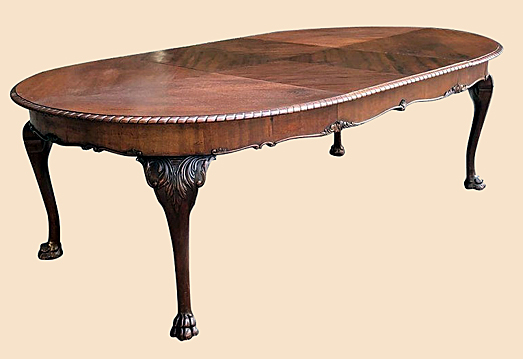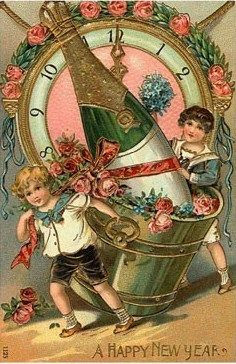 QUESTION: For years I’ve been collecting decorative wooden bowls and utensils that someone told me were Ukranian. They look to be some type folk art but I’m not sure how old the pieces I have actually are. I’ve never seen or read anything about them, but their bright colors and attractive designs really attracted me. I found most of the pieces in my collection at garage sales and fleamarkets. What can you tell me about the pieces in my collection?
QUESTION: For years I’ve been collecting decorative wooden bowls and utensils that someone told me were Ukranian. They look to be some type folk art but I’m not sure how old the pieces I have actually are. I’ve never seen or read anything about them, but their bright colors and attractive designs really attracted me. I found most of the pieces in my collection at garage sales and fleamarkets. What can you tell me about the pieces in my collection?
ANSWER: The pieces in your collection aren’t Ukrainian but Russian—there’s a difference. In fact, they originated in the Kovernino District of the Nizhni Novgorod province north of Moscow. The painting style became to be known as Khokhloma.
 , which first appeared in the second half of the 17th century, is known for its curved and vivid mostly flower, berry and leaf patterns. The Firebird, a figure from the Russian fairytale, can also be used.
, which first appeared in the second half of the 17th century, is known for its curved and vivid mostly flower, berry and leaf patterns. The Firebird, a figure from the Russian fairytale, can also be used.
A combination of red, black, and gold are typical colors for Khokhloma. When artisans paint on wood, they use mostly red, black, green, yellow and orange over a gold background. This makes the wooden tableware look heavier and metallic.
 The production of painted dishes in Khokhloma is first mentioned in 1659 in the letter of a boyar called Morozov to his bailiff, containing an order for 100 painted dishes and 40 painted wine bowls.
The production of painted dishes in Khokhloma is first mentioned in 1659 in the letter of a boyar called Morozov to his bailiff, containing an order for 100 painted dishes and 40 painted wine bowls.
The handicraft owes its origin to the Old Believers, who, fleeing from persecutions of officials, took refuge in the local woods. Even earlier, however, local craftsmen had experience in making tableware from soft woods. But it was icon-painters who taught them the special technique of painting wood in a golden color without the use of real gold.
 The craftsmen carved utensils and dishes out of wood, then primed them with clay mortar, raw linseed oil, and tin powder. They then painted a floral pattern on top of this coating. After that, they coated the pieces with linseed oil and hardened them in a kiln at high temperatures.
The craftsmen carved utensils and dishes out of wood, then primed them with clay mortar, raw linseed oil, and tin powder. They then painted a floral pattern on top of this coating. After that, they coated the pieces with linseed oil and hardened them in a kiln at high temperatures.
Artisans used two principal wood painting techniques on the Khokhloma—the "superficial technique," red and black colors over a goldish one, and the "background technique," a goldish silhouette-like design over a colored background.
One of the villages where the art of Khokhloma painting had originally been practiced in ancient times grew to become a trading post to which the local craftsmen brought their wares for sale starting from the 18th century.
 But it wasn’t until the end of the 19th century that Westerners first learned of the Khokhloma painting style through an exhibition in Paris. But by the early 20th century, the style seemed to be fading away, only to be revitalized during the Soviet times.
But it wasn’t until the end of the 19th century that Westerners first learned of the Khokhloma painting style through an exhibition in Paris. But by the early 20th century, the style seemed to be fading away, only to be revitalized during the Soviet times.
The Khokhloma craftsmen united into artels in the 1920s to early 1930s. In the 1960s, the Soviets built a factory called the Khokhloma Painter near the Khokhloma village and another one in the town of Semyonov. These two factories have become the Khokhloma centers of Russia and still produce tableware, utensils,, furniture, and souvenirs.
The three colors—red, black, and gold—used in Khokhloma painting had a profound symbolism for decorating the sacred church vessels and the dishes and cups used in the monasteries and nunneries, as well as in icon ornaments. The red color represented beauty, the gold color symbolized the spiritual heavenly light, while the black color signified  the cleansing of the human soul. The religious symbolism of colors has long been lost in the Khokhloma art but the precise and solemn scheme of colors inherent in the festive design of the "gilded" dishes grew to be traditionally used for decorating all wooden Khokhloma articles and made them especially favored by collectors.
the cleansing of the human soul. The religious symbolism of colors has long been lost in the Khokhloma art but the precise and solemn scheme of colors inherent in the festive design of the "gilded" dishes grew to be traditionally used for decorating all wooden Khokhloma articles and made them especially favored by collectors.
There are families in the region famous for Khokhloma art who have been keeping secret formulas of painting materials and techniques, transferring them from one generation to the next for more than three centuries.
 To read more articles on antiques, please visit the Antiques Articles section of my Web site. And to stay up to the minute on antiques and collectibles, please join the over 30,000 readers by following my free online magazine, #TheAntiquesAlmanac. Learn more about "Celebrating an Olde Fashioned Holiday" in the 2020 Holiday Edition, online now. And to read daily posts about unique objects from the past and their histories, like the #Antiques and More Collection on Facebook.
To read more articles on antiques, please visit the Antiques Articles section of my Web site. And to stay up to the minute on antiques and collectibles, please join the over 30,000 readers by following my free online magazine, #TheAntiquesAlmanac. Learn more about "Celebrating an Olde Fashioned Holiday" in the 2020 Holiday Edition, online now. And to read daily posts about unique objects from the past and their histories, like the #Antiques and More Collection on Facebook.











































